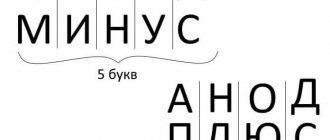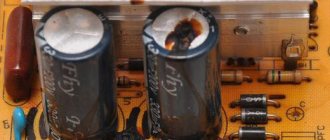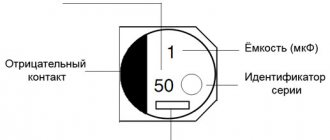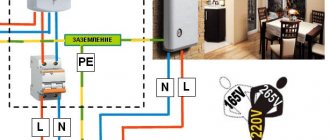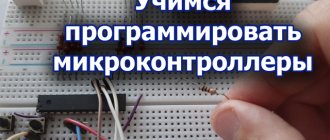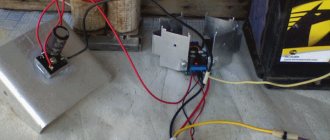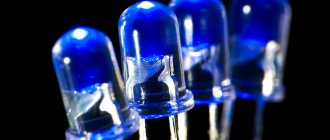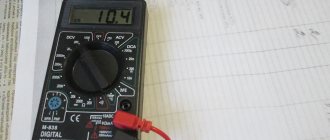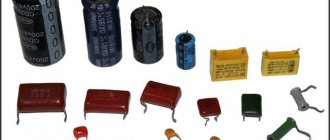Sometimes it is necessary to connect the electrodes of a device or element to a DC power source. They are connected, observing polarity. Cathode and anode are the names of the conductors (electrodes) of the device with which this connection is made. There is no clear definition of these two terms. They are distinguished depending on the chemical and physical processes in which these designations are used.
Anode and cathode
Most popular anodes
Anode is used in metallurgy
for electroplating in order to apply a layer of metal to the surface of products by electrochemical method or for electrorefining. In this process, the metal with impurities is completely dissolved at the anode, and then deposited in its pure form on the cathode.
Most common anodes are made of zinc, which can be cast, spherical, or rolled. Moreover, the latter are used most often. In addition, anodes are made from nickel, copper, tin, bronze, cadmium, an alloy of antimony and lead, silver, platinum and gold. But cadmium anodes are almost never used, which is due to their environmental hazards. Anode
Precious metals are used to increase corrosion resistance, improve the aesthetic properties of objects, as well as for other purposes. In addition, they are useful for increasing the electrical conductivity of products.
In vacuum electronic devices, the anode
- this is a special electrode that is capable of attracting to itself any flying electrons that are emitted by the cathode. In X-ray tubes and vacuum tubes it is designed in such a way that it completely absorbs all the electrons. In cathode ray tubes, anodes are elements of an electron gun that absorb only part of the incoming electrons, forming an electron beam behind them. In semiconductor devices, the electrodes that are connected to the positive current source when the device is open, that is, it has little resistance, are called the anode, and the one that is connected to the negative pole, respectively, is the cathode.
Anode and cathode sign
In the specialized literature you can often find very different designations for the anode sign: “+” or “-”. This is determined by the characteristics of the processes under consideration. For example, in electrochemistry it is believed that the cathode is the electrode on which the reduction process occurs, and the anode is the electrode on which the oxidation process occurs. When the electrolyzer is actively operating, an external current source provides an excess of electrons at one electrode and metal reduction occurs here. This electrode is the cathode. And on the other electrode, in turn, there is a lack of electrons and oxidation of the metal occurs, and it is called the anode.
When a galvanic cell operates, an excess of electrons at one of the electrodes is no longer provided by an external current source, but rather by the oxidation reaction of the metal, that is, here the anode will be negative. The electrons that pass through the external circuit will be spent on the reduction reaction, that is, the positive electrode can be called the cathode.
Based on this interpretation, for a battery, the anodes and cathodes change places depending on the direction of the current inside the battery. In electrical engineering, the anode is called the positive electrode. So electric current flows from the anode to the cathode, and electrons flow vice versa.
Only in one direction. Once upon a time, tube diodes were used. But now semiconductor diodes are mainly used. Unlike lamp ones, they are much smaller in size, do not require filament circuits, and are very easy to connect in different ways.
Symbol of the diode in the diagram
The figure shows the symbol of the diode in the diagram
.
The letters A and K respectively indicate the diode anode
and
diode cathode
.
The anode of a diode is the terminal that is connected to the positive terminal, either directly or through circuit elements. The diode cathode is the terminal from which a positive potential current emerges and then, through circuit elements, enters the negative electrode of the current source. Those. The current through the diode
goes from the anode to the cathode. But in the opposite direction the diode does not pass current. If a diode is connected to one of its terminals, then at its other terminal a constant voltage is obtained with a polarity depending on how the diode is connected. If it is connected by the anode to an alternating voltage, then we will receive a positive voltage from the cathode. If it is connected to the cathode, then a correspondingly negative voltage will be received from the anode.
Positive negative electrode
The positive and negative electrodes of these batteries are made of thin nickel-plated steel plates. The active mass briquettes are placed in perforated steel shells, and the plates are welded together so that there is a gap of 1 mm between two adjacent plates. This ensures access of the electrolyte to the active mass.
Repaired positive and negative electrodes, as well as new electrodes, after cleaning the ears with a metal brush, are collected in blocks on the floor and welded with a hydrogen flame or a hot carbon electrode in the conductor. Electrode blocks are assembled from half-blocks in such a way that each positive electrode is located between two negative ones. The separators are inserted with the corrugated side towards the positive electrode. The blocks assembled in this way are inserted into the cells of the monoblock in accordance with the polarity alternation established for this type of battery, and vinyl plastic safety shields are placed on top of the edges of the separators.
The capacity of the positive and negative electrodes does not change to the same extent with changes in the temperature of the electrolyte.
Half-blocks of positive and negative electrodes are defective in accordance with technical requirements when accepting batteries for restoration and overhaul. If there are no defective defects, the semi-blocks of electrodes are washed with distilled water, then they are disassembled, cutting out suitable electrodes from the bridge of the barrel and maintaining the length of the electrode ears, they are sent to the repair and assembly department. Electrodes with shortened ears are fused into a template.
Separators 2 are installed between the positive and negative electrodes, made of porous acid-resistant materials: microporous rubber (P - mipor), microporous plastic (M - miplast) or porous polyvinyl chloride. Separators protect opposite electrodes from short-circuiting.
The area of single positive and negative electrodes is equal.
To do this, the dried positive and negative electrodes are reassembled into blocks, connected to the switchboard, filled with a solution of reactive potassium hydroxide with a specific gravity of 1 21 - 1 19 and subjected to re-formation.
The area of single positive and negative electrodes is equal.
| Battery cover for POKZZAN Cumulators. |
The legs of the positive and negative electrodes are located so that electrodes of one polarity rest on one pair of monoblock prisms, and those of the other polarity rest on another pair of prisms. This arrangement reduces the possibility of short-circuiting opposite electrodes through sludge. The grid serves as a frame that ensures the mechanical strength of the electrode. They are cast from an alloy of lead (94%) and antimony (6%) using various additives. The alloy has a number of advantages compared to pure lead. It has better casting and corrosion properties, increased mechanical strength.
A short circuit of the positive and negative electrodes of the battery occurs when the separators are destroyed or the electrodes are short-circuited through crumbled active mass, as well as through conductive bridges made of lead sponge formed on the edges of the electrodes. When there is a short circuit in the battery, its emf is less than 2 V, and the density of the electrolyte in it is significantly lower than in other batteries of the battery. The cause of the short circuit is determined after lifting the battery cover.
The first formation receives positive and negative electrodes. First, current leads made of nickel tape are welded to the electrodes, then they are assembled into blocks with blank electrodes made of nickel tape 0 2 - 0 3 mm thick. The electrodes in the block are insulated from the idle electrodes with corrugated, perforated vinyl plastic. The outermost electrodes in the block are idle.
Each battery consists of positive and negative electrodes (plates), the active part of which is immersed in an electrolyte solution (an aqueous solution of sulfuric acid) poured into a special vessel. The initial material of the positive and negative electrodes of the battery is lead. As a result, a galvanic cell is formed with a voltage of about 2 V. The anode in it is lead dioxide, and the cathode is lead sponge. As this reaction occurs, sulfuric acid is consumed and water is produced as a result of the reaction. When discharging, current inside the battery flows from the cathode to the anode.
The film separator, located between the positive and negative electrodes, plays an important role in the operation of silver-zinc batteries.
LED polarity: how to determine plus and minus
When using LEDs in creating various circuits, they must be installed correctly. Soldering in most cases does not create problems; determining the polarity is a little more difficult if you do not have experience working with testing equipment.
How to determine polarity with a multimeter tester
The easiest way to check the LED is with a multimeter. When connecting the pins in the “dialing” mode to the electrodes, you can get 2 results: the LED lights up and displays a number on the screen depending on the color of the radiation, or shows a very large number. With the first option, we can conclude that the light source is working and connected to the multimeter correctly (plus to plus, minus to minus).
The second method of using a multimeter is to switch to resistance testing. If the red probe touches the plus, the black probe touches the minus, a value in the range of 1600–1800 appears on the screen.
If the multimeter has a PNP compartment, the E (emitter - “+”) and C (collector – “-”) compartments are required to determine the polarity of the LED. The light source glows if the cathode is inserted into “C” and the anode into “E”.
If an NPN multimeter compartment is used, the LED will light if the legs are swapped.
By appearance
In the production of LEDs, different housings are used. DIP elements with a cylindrical body of various diameters are widely used. There are many surface mount SMDs being manufactured. Ultra-bright light sources differ in the size of their housings and crystals. An experienced radio amateur determines the cathode and anode by external signs.
For DIP elements:
- longer anode leg;
- the silhouette in the flask is smaller at the anode, the shape of the cathode resembles a flag;
- a source with a power of more than 1 W has a “+” marking on the anode leg.
For SMD LEDs:
- the cathode is indicated by a cut on the body;
- the heat sink on the back of the case is located closer to the anode;
- The “P” pictogram is facing the anode with the top shelf, the top of the “T” pictogram is facing the cathode.
Some manufacturers put certain symbols on SMD LED housings that allow you to determine the polarity.
Important! There are SMDs made according to a different principle (some manufacturers do not comply with the standards). On complex models there are always symbols “+” and “−”
Any non-semiconductor radio tube (zener diode) consists of an anode, cathode and grid. The cathode is always a heated electrode made in the shape of a cylinder. During thermionic emission, electrons move to the anode (box or plate) - a tungsten conductor with high resistance.
To determine the performance of the zener diode, use a multimeter in ringing mode. If a positive probe is applied to the anode, a negative probe to the cathode, the zener diode will open and the voltage value will be visible on the screen. If you swap the probes, the zener diode will close and the number 1 will appear on the screen.
By supplying power
To use power connection testing, a 3-6V source and any wattage resistor of 300-470 ohms are required. The resistor is soldered to one leg of the multimeter. Then you need to touch the leads with the probes. The LED lights up if the positive probe touches the anode, and the negative probe touches the cathode.
Technical documentation
A large amount of information (dimensions, pinout, electrical parameters) about the semiconductor light source is provided by manufacturers in the technical documentation. It is issued when purchasing large quantities of electronic components along with other accompanying documentation. If you buy one or more LEDs, the seller will not provide technical documentation.
If the brand of the product is known, the data can be found in reference books and on the Internet.
In the diagram, a semiconductor light source is indicated by a pictogram in the shape of a triangle, at the top of which a line is drawn perpendicular to the base. The top is directed towards the cathode. The LED is indicated by 2 arrows above the image.
Cathode for semiconductor devices
Semiconductor devices include devices consisting of a substance whose electrical resistivity is greater than the resistance of the conductor, but less than the resistance of the dielectric. Features of such devices include a large dependence of electrical conductivity on the concentration of additives and the influence of electric current. The properties of pn junctions determine the operating principles of most semiconductor components.
The simplest representative of semiconductor components is the diode. This is an element that has two terminals and one pn junction, the distinctive feature of which is the flow of current in one direction.
How to determine where is the anode and where is the cathode?
When determining the cathode and anode, you must first focus on the direction of the current, and not on the polarity of the power source. Despite the fact that these concepts are closely related to the polarity of the current, they are more determined by the directions of the electricity vectors.
For example, in batteries, when recharging, the roles of the cathode and anode change. This is due to the fact that during charging the direction of the electric current changes. The electrode that acts as an electrode when the battery is operating in power source mode during charging performs the functions of a cathode and vice versa - the cathode turns into an anode.
In Fig. 1, the electrolysis process is depicted, during which the movement of anions (negative ions) and cations (positive ions) occurs. Anions rush towards the anode, and positive cations move towards the cathode.
Rice. 1. Electrolysis
During electrolysis, charge carriers of different signs move, however, by definition, the anode is the electrode into which current flows. In the figure, the anode is connected to the positive pole of the current source, which means that current conditionally flows into this electrode.
Pay attention to Figure 2, which shows a diagram of a galvanic cell. Rice
2. Galvanic cell
Rice. 2. Galvanic cell
The positive terminal of the current source is the cathode, and not the anode, as one might expect. By carefully studying the operating principle of a galvanic cell, you can understand why the anode is the negative pole.
Pay attention to the diagram of the structure of a galvanic current source. The arrows (above) indicate the direction of movement of electrons, but the direction of current is conventionally considered to be movement from plus to minus
That is, when the circuit is closed, the current enters precisely the negative pole, which is the anode on which the oxidation reaction occurs. In other words, the current from the positive electrode passes through the load to the anode, which is the negative pole of the galvanic cell. With a thoughtful approach, everything falls into place.
When determining the positions of the anode and cathode in radio-electronic elements, reference materials are used.
The purpose of the electrodes is indicated by:
- body shape (Fig. 3);
- lead length (for LEDs) (Fig. 4);
- marks on the housings of devices or the anode mark;
- different thickness of diode leads.
Rice. 3. DiodeFig. 4. LED electrodes
Determining the pin assignments of semiconductor diodes can be determined using measuring instruments. For example, all types of diodes (except zener diodes) conduct current in only one direction. If you connect a tester or ohmmeter to a diode and it shows insignificant resistance, then the anode is connected to the positive probe of the device, and the cathode is connected to the negative probe.
If the conductivity type of the transistor is known, then using the same tester you can determine the emitter and collector terminals. Between them, the resistance is infinitely high (there is no current), and between the base and each of them there will be conductivity (only in one direction, like a diode). Knowing the type of conductivity, by analogy with a diode, you can determine where the anode is and where the cathode is, and therefore determine the terminals of the collector or emitter (see Fig. 5).
Rice. 5. Transistor on the circuits and its electrodes
As for vacuum diodes, they cannot be checked by measuring with conventional instruments. Therefore, their pins are located in such a way as to eliminate connection errors. In electronic tubes, the terminals exactly match the location of the contacts of the socket intended for this radio element.
This is interesting: How to solder wires correctly - video, technology, soldering procedure
Why is there confusion?
Everything happens because there is no clear connection between minus and plus to the components called “K” and “A”. Michael Faraday also came up with a simple polarity marking rule for this pair of electrodes. What is an anode, according to his explanation? When memorizing the definition, the scientist suggested drawing an analogy with the Sun. Where the current enters (rising) is the anode, where the current leaves (sunset) is the cathode. For batteries, the polarity at the anode and cathode changes depending on whether it operates as a galvanic cell (when discharging) or as an electrolyser (when charging).
DC welding also ambiguously determines “A” and “K” when igniting the arc with direct or reverse polarity.
Signs “A” and “K” for DC welding
How to determine anode and cathode
Electrical diagram of the cathode and anode:
The distinction between cathode and anode is based solely on current and not voltage. The metal used for the cathode has a significantly higher number of electrons than neutrons or protons.
For example, one of the energy consumers is in direct connection. Next, the current through the anode from the external circuit penetrates into the element. Electric current flows out of the element into the external circuit directly through the cathode. This is somewhat reminiscent of an upside-down image. If these designations are complex, then only chemists can figure them out. Now we need to turn it back on. In this case, semiconductor-type diodes will conduct almost no electric current. However, there is a possibility of reverse breakdown of the elements.
Electrovacuum diodes (for example, radio tubes) do not have the ability to conduct reverse current at all. It is conventionally accepted that no current flows through them. In this regard, formally, the anode and cathode terminals of diodes are not responsible for performing these functions.
In cathodic protection, a metal anode is electrically connected to the system being protected and partially corrodes or dissolves the metal of the protected system. This metal anode is more responsive to the corrosive environment of the system being protected. The hull of an iron or steel vessel can be protected with a zinc anode, which dissolves in seawater and prevents corrosion of the hull.
A less obvious example of this type of protection is the galvanizing process of iron. This process coats iron structures (such as fencing) with a coating of zinc metal. As long as the zinc remains intact, the iron is protected from corrosion. Over time, the zinc coating becomes damaged, resulting in cracking or physical damage.
Let's say a word about electrochemistry
Slightly different definitions are used here. Thus, the anode is considered as an electrode where oxidative processes take place. And remembering your school chemistry course, can you answer what happens in the other part? The electrode on which reduction processes occur is called the cathode. But there is no connection to electronic devices. Let's look at the value of redox reactions to us:
- Oxidation. The process of particle giving up an electron occurs. The neutral one turns into a positive ion, and the negative one is neutralized.
- Recovery. The process of the particle receiving an electron occurs. The positive turns into a neutral ion and then into a negative ion when repeated.
- Both processes are interconnected (so, the number of electrons that are given is equal to the number of them added).
Faraday also introduced names for elements that take part in chemical reactions:
- Cations. This is the name given to positively charged ions that move in the electrolyte solution towards the negative pole (cathode).
- Anions. This is the name given to negatively charged ions that move in the electrolyte solution towards the positive pole (anode).
Positively charged electrode
Positively charged electrode (anode) symbol.
The positively charged electrode at which the reduction of anions occurs is called the anode.
A positively charged electrode (anode) has the shape of a plate or rod.
Oxidation reactions take place on a positively charged electrode (anode), the nature of which depends on whether the metal anode is capable of dissolving under specific electrolysis conditions or whether it is in an inert (passive) state.
Anode is a positively charged electrode of an electric vacuum device, towards which electrons emitted by the cathode move under the influence of an accelerating electric field. The kinetic energy of the electrons entering the anode is converted into thermal energy, which can cause a significant increase in the temperature of the anode and even melt it. Therefore, an important parameter of an electric vacuum device is the maximum permissible power dissipated by the anode in the form of heat. To ensure good heat removal from the anodes, their surfaces are made dark - covered with a layer of carbon, zirconium or titanium, which have the highest emissivity. Anodes are made of molybdenum, tantalum, nickel or graphite in the form of cylinders, planes or caps.
On the side of the positively charged electrodes, a repulsive force acts on the particle, and on the side of the negatively charged electrodes, an attractive force acts. Under the influence of these forces, the particles undergo minor deviations and go beyond the electrode system.
| The appearance of a corona on a positively charged rod. |
As a corona develops near a positively charged electrode, there is a constant expansion of the area covered by the corona. Under the influence of electric field forces, light electrons of the avalanche move to the rod and are absorbed by it, heavy positive ions are directed to the cathode.
An electron can move towards a positively charged electrode by tunneling through potential barriers under the influence of an applied voltage. The movement of an electron from the n/2 level of a molecule adjacent to an excited one fills a positive hole in the latter and, in turn, creates a positive hole in it itself. Movements of this kind lead to the migration of the positive hole to the negative electrode and create a hole current.
The part to be polished is always suspended on a positively charged electrode - the anode. The main disadvantage of electrochemical polishing is the smoothing of sharp corners when polishing parts of complex shapes. The current density at the tips of the part is greatest, so the sharp corners dissolve faster than the rest of the part.
| Electrolysis of copper chloride. |
Negative chloride ions are attracted to the positively charged electrode, the anode.
Negatively charged chlorine ions are attracted to the positively charged electrode, the anode. On the surface of the anode, each chlorine ion C1 is discharged, giving an electron to the anode.
| Thermionic emission phenomenon. |
The electrons emitted from the lamp filament are attracted by the positively charged electrode A, as a result of which a current is established in the external circuit. If electrode A is connected to the negative pole of the battery, then it repels the electrons emitted from the heated filament; in this case there will be no current in the external circuit.
Application
Electrodes as anode and cathode are most often used:
- in electrochemistry;
- vacuum electronic devices;
- semiconductor elements.
Let us consider in general terms the areas of application of anodes and cathodes.
In electrochemistry
In this field, anode and cathode are key concepts in the process of electrochemical reactions used mainly for the reduction of metals. Such reactions are called electrolysis. The use of electrolysis processes makes it possible to obtain pure metals, since atoms of only the metal whose positive ions are contained in the electrolyte solution are formed at the cathode.
Using electrolysis, a very thin zinc coating is applied to steel sheets and parts of any configuration. Galvanic coating effectively protects the metal from corrosion.
In vacuum electronic devices
Examples of vacuum devices are electronic tubes, cathode ray tubes, and television picture tubes. They work on the same principle: The heated cathode emits electrons, which rush to the anode with a high positive electrical potential.
The formation of electrons on a hot electrode is called thermionic emission, and the electric current arising between the cathode and anode is called thermionic current. The value of such devices is that they conduct current only in one direction - from the cathode to the anode.
Adding a grid between the electrodes allows you to adjust the current parameters over a wide range by changing the voltage on the grid. Such vacuum tubes are used as signal amplifiers. At this time, vacuum devices are used quite rarely, since they are successfully replaced by miniature semiconductor diodes and transistors, often made on a single crystal in the form of a microcircuit.
In semiconductor devices
Electronic parts based on semiconductors are valued for their low current consumption and small size. They have almost driven vacuum tubes out of use. The terminals of semiconductor devices are traditionally called anodes and cathodes.
Despite all the advantages of semiconductors, these devices have a drawback - they are “noisy”. In high power amplifiers this noise becomes noticeable. High-quality amplification equipment still uses vacuum tubes.
Cathode-ray picture tubes in modern TVs are being replaced by LED-backlit screens. They are more economical, perfectly convey the color palette, and make the receiver almost flat.
Electrolysis of melts
Cathode and anode in theory and practice
During electrolysis of the melt, the anions of acid residues are oxidized at the anode, and metal cations are reduced at the cathode. There are no water molecules in the system.
For example: electrolysis of molten sodium chloride. Sodium cations are reduced at the cathode:
Cathode (–): Na+ + ē → Na
Chlorine anions are oxidized at the anode:
Anode (+): 2Cl– – 2ē → Cl2
The overall equation for the electrolysis of molten sodium chloride is:
2Na+Cl– → 2Na + Cl2
Another example: electrolysis of molten sodium hydroxide. Sodium cations are reduced at the cathode:
Cathode (–): Na+ + ē → Na
Hydroxide ions are oxidized at the anode:
Anode (+): 4OH– – 4ē → O2 + 2H2O
The overall equation for the electrolysis of molten sodium hydroxide is:
4Na+OH– → 4Na + O2+ 2H2O
Many metals are produced industrially by electrolysis of melts.
For example, aluminum is produced by electrolysis of a solution of aluminum oxide in molten cryolite. Cryolite – Na3[AlF6] melts at a lower temperature (1100°C) than aluminum oxide (2050°C). And aluminum oxide dissolves perfectly in molten cryolite.
In cryolite solution, aluminum oxide dissociates into ions:
Al2O3 = Al3+ + AlO33-
Aluminum cations are reduced at the cathode:
Cathode (–): Al3+ + 3ē → Al
Aluminate ions are oxidized at the anode:
Anode (+): 4AlO33– – 12ē → 2Al2O3 + 3O2
The general equation for the electrolysis of a solution of aluminum oxide in molten cryolite:
2Al2O3 = 4Al + 3O2
In industry, graphite rods are used as electrodes in the electrolysis of aluminum oxide. In this case, the electrodes are partially oxidized (burnt) in the released oxygen:
C + O2 = C+4O2-2
Anode and cathode sign
Which sign is indicated by “K”, which “A”, depends on what procedure and in what area is being considered. In electrochemistry, there are two devices that have different symbols: an electrolyzer and a galvanic cell.
During electrolysis (redox chemical interaction under the influence of an external IP), the minus “-” denotes the cathode. It is on it that metals are reduced due to an excess of electrons. The plus “+”, in turn, marks the anode (positive electrode), where metals are oxidized due to a lack of negatively charged particles.
Signs of charges during electrolysis
In a galvanic cell, oxidation occurs without external influence of electricity. If we take a copper-zinc battery as an example, a large number of electrons (minus) accumulate at the anode. When moving along the external chain, they participate in the reduction of copper. This means that in this case the positive electrode will be the cathode.
Attention! In galvanic cells, the plus is the cathode, the minus is the anode. In electrolyzers it’s the other way around – the anode is considered a plus, the cathode is considered a minus.
Charge signs for a galvanic battery
For semiconductor devices, both the sign and the term are clearly assigned to the pins of the part. The anode is the “plus”, the cathode is the “minus” of the diode.
Video
Coffee capsule Nescafe Dolce Gusto Cappuccino, 3 packs of 16 capsules
1305 ₽ More details
Coffee capsules Nescafe Dolce Gusto Cappuccino, 8 servings (16 capsules)
435 ₽ More details
Stabilizers for smartphones
Definition of anode and cathode
First, let's take a very serious document, which is the LAW for science, technology and, of course, schools. This is GOST 15596-82. CHEMICAL CURRENT SOURCES. Terms and Definitions". There on page 3 you can read the following: “The negative electrode of a chemical current source is an electrode that, when the source is discharged, is an anode.” The same thing, “The positive electrode of a chemical current source is the electrode, which, when the source is discharged, is the cathode.” (Terms highlighted by me. BH). But the texts of the rules and GOST contradict each other. What's the matter?
And the whole point is that, for example, a part dipped into an electrolyte for nickel plating or electrochemical polishing can be both an anode and a cathode, depending on whether another layer of metal is applied to it or, conversely, removed. An electric battery is a classic example of a renewable chemical source of electrical current. It can be in two modes - charging and discharging. The direction of the electric current in these different cases will be exactly the opposite in the battery itself, although the polarity of the electrodes does not change.
Depending on this, the purpose of the electrodes will be different. When charging, the positive electrode will receive electric current and the negative electrode will release it. When discharging, it’s the other way around. If there is no movement of electric current, talking about the anode and cathode is meaningless.
“Therefore, in order to avoid ambiguity and uncertainty, as well as for the sake of greater accuracy,” M. Faraday wrote in his studies in January 1834, “I further propose to use the terms that I will now define.”
What are the reasons for the introduction of new terms into science by Faraday? And here they are: “The surfaces on which, according to the usual terminology, an electric current enters and leaves a substance, are very important places of action and must be distinguished from the poles.” In those days, after T. Seebeck’s discovery of the phenomenon of thermoelectricity, there was a popular hypothesis that the Earth’s magnetism was caused by the temperature difference between the poles and the equator, as a result of which currents arise along the equator. It was not confirmed, but served Faraday as a “natural pointer” when creating new terms. The magnetism of the Earth has such a polarity as if an electric current were flowing along the equator in the direction of the apparent movement of the sun.
Designation of anode and cathode
Faraday writes: “On the basis of this idea, we propose to call that surface which is directed to the east the anode, and that which is directed to the west the cathode.” The new terms were based on the ancient Greek language and when translated they meant: anode - the path (of the sun) up, cathode - the path (of the sun) down.
The Russian language has wonderful terms SUNRISE and SETTING, which are easy to apply for this case, but for some reason Faraday’s translators did not do this. We recommend using them, because in them the root of the word is MODE and, in any case, this will remind the user of the term that without the movement of current the term is not applicable. For those who want to check the reasoning of the creator of the term using other rules, for example, the cork plug rule, we inform you that the north magnetic pole of the Earth lies in Antarctica, near the South Geographic Pole.
There are countless errors in the use of the terms ANODE and CATHODE. Including in foreign reference books and encyclopedias. Therefore, in electrochemistry they use other definitions that are more understandable to the reader. Their anode is an electrode where oxidation processes take place, and the cathode is an electrode where reduction processes take place. In this terminology there is no place for electronic devices, but in electrical terminology it is easy to indicate the anode of a radio tube, for example. It contains electric current. (Not to be confused with electron direction).
How does the battery work?
